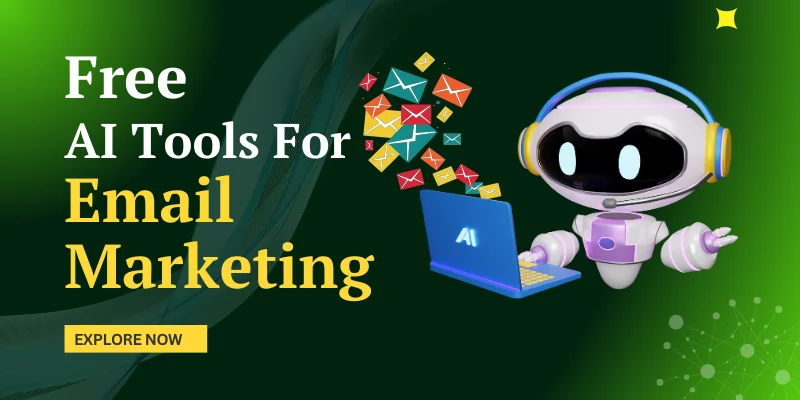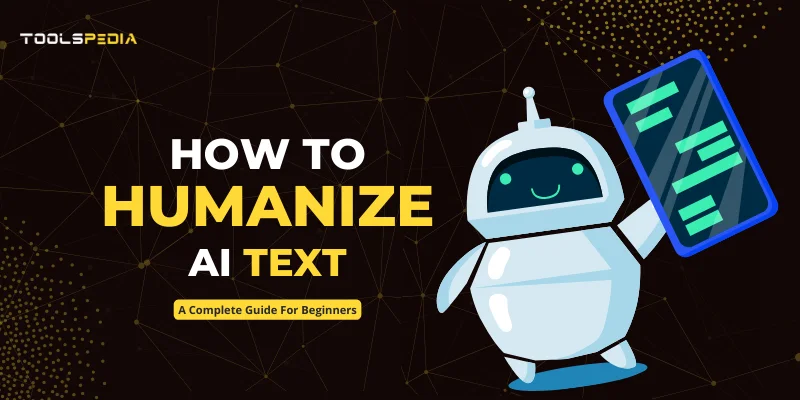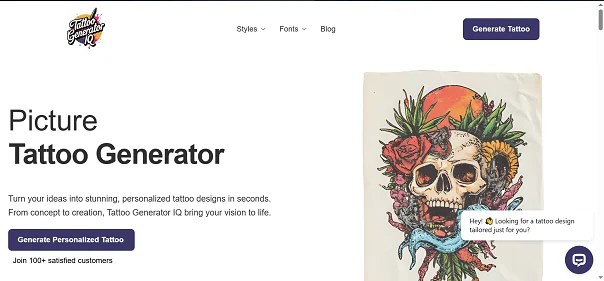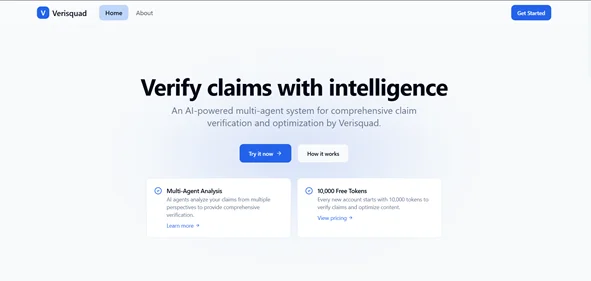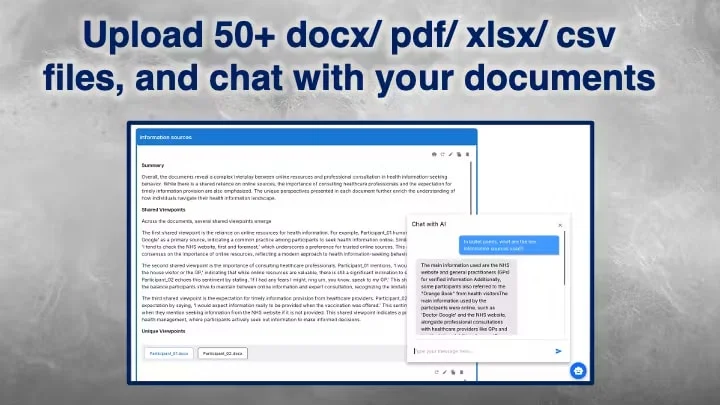Are you looking for the best solutions for optimized email marketing? The top 3 free AI tools for email marketing in this guide will help you unlock the power of artificial intelligence for your business. These AI tools provide strong capabilities to improve your email marketing approach and beat the competition!
Every tool is meant to simplify procedures and increase interaction by regulating intelligent segmentation, predictive analytics and much more. Read this guide and learn how including artificial intelligence might transform your email marketing strategy and enable you to quickly produce focused, powerful messages.
So, immediately improve your marketing initiatives with these robust but readily available AI technologies right now!
Introduction to AI in Email Marketing
Artificial intelligence (AI) is changing the field of email marketing by allowing marketers to achieve formerly unheard-of degrees of personalization, efficiency, and efficacy. AI-powered tools and algorithms will help companies maximize every facet of their email campaigns, from content production to audience segmentation and performance analysis. How? Learn here
Enhanced Personalization
AI tools for email marketing let companies build extremely customized email messages that fit individual tastes, behaviors, and historical interactions. Through real-time, massive data analysis, artificial intelligence can forecast consumer preferences and provide pertinent information that speaks to every recipient.
Automation and Efficiency
AI runs campaigns, A/B testing, email scheduling, and repeated chores, including campaign optimization. This automation guarantees that campaigns are constantly improved depending on performance criteria and user behavior data, thereby saving time as well.
Predictive Analytics
Predictive analytics enabled by artificial intelligence enables companies to project consumer behavior trends, including email engagement probability or purchase intent. This foresight makes more focused communication techniques possible and helps to enable proactive campaign changes.
Improved Decision-Making
AI helps marketers make fast, data-driven decisions by processing and interpreting challenging data sets. From audience segmenting to send time optimization, artificial intelligence-driven insights improve advertising efficacy and return on investment (ROI).
In summary, AI transforms email marketing from a static broadcast to a dynamic, personalized engagement tool. As businesses harness AI’s capabilities, they can deliver more relevant content, improve operational efficiency, and ultimately achieve higher conversion rates and customer satisfaction levels.
Benefits of Using AI Tools
By providing sophisticated capabilities that improve personalizing, automation, and analytics, artificial intelligence has revolutionized email marketing. Including AI tools in your email marketing plan can help you to achieve the following advantages:
Enhanced Personalization
AI helps companies create highly customized emails that fit every recipient’s tastes, activities, and past interactions. Large-dataset real-time analysis by AI algorithms helps predict consumer interests and spot trends, therefore enabling dynamic content customization. Higher engagement rates and closer client relationships brought about by this tailored strategy help drive higher conversion rates and better return on investment.
Automation of Repetitive Tasks
AI handles labor-intensive, time-consuming chores, including email segmentation, A/B testing, and campaign optimization. This automation frees up precious time for marketers to focus on strategy development and creative content generation.
Automated processes guarantee consistency in campaign execution and allow for ongoing development depending on performance criteria and client insights.
Advanced Audience Segmentation
AI-powered tools more precisely segment audiences based on demographics, behavior, and engagement history using machine learning. By creating exact audience segments, businesses can provide communications meant for particular consumer groups. This focused strategy promotes campaign relevancy, raises open and click-through rates, and lessens email weariness among recipients.
Predictive Analytics for Strategic Insights
Predictive analytics enabled by artificial intelligence give companies a practical understanding of consumer behavior and future trends. AI systems forecast possible results and suggest tactics to maximize campaign performance by analyzing pattern patterns in past data.
Predictive analytics help businesses maximize their return on investment by helping them make smart decisions, project consumer wants, and change their marketing strategy proactively.
Improved Email Deliverability and Engagement
By adjusting subject lines, content based on recipient preferences and behavior, and send times, AI technologies improve email deliverability. To maximize email effectiveness and guarantee messages find the inbox, artificial intelligence systems examine elements, including open rates, click-through rates, and spam scores.
AI-driven marketing raises engagement, lowers unsubscribed rates, and enhances general email reputation by delivering pertinent and timely content.
Real-time Data Analysis and Actionable Insights
Real-time analysis of campaign performance measures and consumer interactions made possible by artificial intelligence gives marketers an immediate understanding of campaign efficacy. Real-time key performance indicators (KPIs) allow marketers to rapidly discover patterns, point out possibilities, and handle problems as they surface. Real-time data analysis enables flexible decision-making, therefore enabling marketers to instantly maximize campaigns and seize new prospects.
In a nutshell, AI tools revolutionize email marketing by enabling enhanced personalization, automation of repetitive tasks, advanced audience segmentation, predictive analytics for strategic insights, improved email deliverability and engagement, and real-time data analysis.
By leveraging AI’s capabilities, marketers can create more targeted, relevant, and effective email campaigns that drive engagement, increase conversions, and, ultimately, achieve business growth objectives.
Criteria for Choosing AI Tools
Maximizing campaign efficacy and reaching corporate goals depend on choosing the correct AI tools for email marketing. As artificial intelligence develops, marketers have access to a growing array of technologies with different uses. Making an informed choice requires weighing numerous important elements:
Campaign Objectives and Needs
Clearly state your advertising objectives and particular needs before deciding on an artificial intelligence technology.
Find out if you require artificial intelligence for all of these uses—personalizing, task automation, analytics improvement, or all-around enhancement. Knowing your objectives will enable you to give the characteristics and capabilities of the AI tool choice top priority.
Integration Capabilities
See whether the AI solution easily connects with your current CRM system, email marketing platform, and other marketing tools. Integration capacity guarantees seamless data flow and helps to present a consistent picture of consumer contacts throughout several channels.
Search for products with APIs or pre-built connectors with well-known systems such as Mailchimp.
Ease of Use and User Interface
Particularly if your team lacks technological knowledge in artificial intelligence, take into account the user interface (UI) and simplicity of use of the product.
A user-friendly interface lets marketers employ AI capabilities without any training by streamlining navigation. Look for tools with clear instructions for setup and configuration, drag-and-drop features, and easy dashboards.
Scalability and Flexibility
Evaluate the scalability of the AI tool to suit your rising email marketing needs. Find out if the tool can support extra features, manage rising data volumes, and change with the times in marketing strategy.
As your company grows, scalable artificial intelligence tools guarantee long-term usability and help avoid the necessity for regular tool migrations.
Customization and Personalization Options
AI tools should provide customizing choices in line with the voice and customer preferences of your brand. Search for tools that let you customize email content, adjust messaging depending on audience segments, and maximize campaigns for unique customer paths. Customizing features increases the relevance of your email communications and helps to increase involvement.
Data Security and Compliance
Prioritize data security and compliance when selecting an AI tool for email marketing. Ensure the tool adheres to industry standards (e.g., GDPR, CCPA) for data protection and privacy.
Verify if the tool encrypts sensitive data, implements robust security measures, and provides compliance documentation. Choosing a secure AI tool safeguards customer information and mitigates risks associated with data breaches.
Cost and ROI
Evaluate the cost-effectiveness of the AI tool in relation to its features and benefits. Compare pricing models (e.g., subscription-based, pay-per-use) and consider upfront costs, ongoing maintenance fees, and potential ROI. Calculate the expected return on investment (ROI) based on projected improvements in campaign performance, efficiency gains, and revenue generation.
Support and Training
Assess the level of customer support and training offered by the AI tool provider. Look for tools that provide responsive customer support channels (e.g., live chat, email, phone support) and comprehensive documentation. Training resources such as tutorials, webinars, and user guides help marketers maximize the tool’s capabilities and resolve issues efficiently.
Performance and Reliability
Based on user reviews, case studies, and testimonials, review the AI tool’s performance metrics and reliability. Evaluate factors such as uptime percentage, processing speed, and accuracy of AI-driven predictions. Reliable performance ensures consistent campaign delivery and minimizes disruptions that could impact email marketing effectiveness.
Industry Reputation and Reviews
Research the AI tool provider’s reputation within the industry and read reviews from other marketers who have used the tool. Consider factors such as customer satisfaction ratings, awards or accolades received, and endorsements from industry experts. A reputable AI tool provider is more likely to deliver reliable solutions and support to meet your email marketing objectives.
Top 3 Free AI Tools for Email Marketing
Discover a range of powerful AI tools for email marketing without spending any money to improve your email marketing initiatives. These solutions employ artificial intelligence to automate activities, tailor content, and analyze data, helping marketers to develop more effective campaigns.
Let’s explore how these AI tools can improve your email marketing approach and drive engagement and conversions:
Tool 1: MailerLite
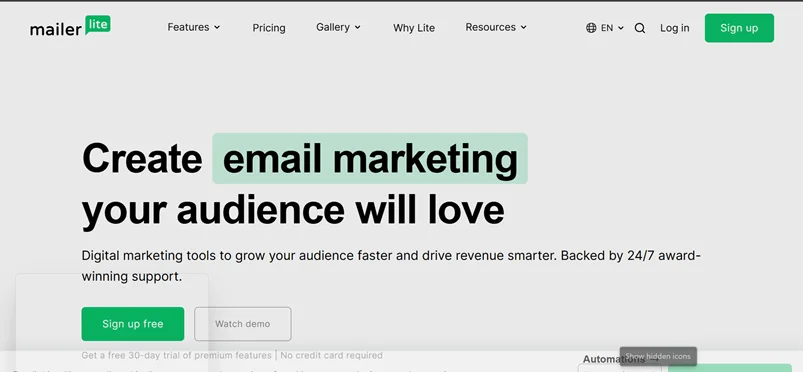
MailerLite is a popular email marketing platform that stands out for its affordably priced plans and unique features, such as its Facebook integration for advanced targeting and the ability to sell digital or paid subscriptions.
MailerLite is a robust email marketing platform that offers powerful features tailored for small to medium-sized businesses. Known for its user-friendly interface and affordability, MailerLite provides a range of tools designed to streamline email marketing campaigns and maximize engagement.
What is MailerLite?
MailerLite is a San Francisco-based email marketing solution that launched in 2005 as a marketing platform. It ranked as one of Forbes Advisor’s best email marketing softwar solutions—particularly for selling paid subscriptions.
MailerLite is a very popular and highly rated email marketing platform known for its free and low-cost plans, ease of use, and quality support. In addition to its core email marketing platform, it offers a variety of marketing-related services, such as a website builder, an email verifier, and paid newsletter subscriptions.
Key Features:
- Drag-and-Drop Editor:
MailerLite’s intuitive drag-and-drop editor allows marketers to create visually appealing email campaigns without any coding knowledge. Users can customize templates, add images, and create responsive designs effortlessly.
- Automation:
Automate email workflows with MailerLite’s automation features, including welcome sequences, abandoned cart emails, and personalized customer journeys based on subscriber actions. This helps businesses nurture leads and maintain consistent communication with their audience.
- Advanced Segmentation:
Segment subscribers based on demographics, behavior, and engagement metrics to deliver targeted content that resonates with specific audience segments. This enhances campaign relevance and improves overall engagement rates.
- A/B Testing:
Optimize campaign performance with A/B testing capabilities that allow marketers to test different subject lines, content variations, and send times. Data-driven insights from A/B tests help refine email strategies for better results.
- Analytics and Reporting:
Gain valuable insights into campaign performance through real-time analytics and comprehensive reports. Track open rates, click-through rates, conversion rates, and subscriber growth to measure the impact of email campaigns and make data-driven decisions.
- Integration:
MailerLite integrates seamlessly with popular platforms such as WordPress, Shopify, and Zapier, enabling marketers to sync data, automate workflows, and enhance functionality across multiple tools.
Pros and Cons
Pros
- Free forever plan for up to 1,000 subscribers and 12,000 emails per month
- 90 pre-made designs in the Email template gallery
- Option to sell paid subscriptions
- Integrates with Facebook for advanced segmentation and targeting
- Annual and monthly billing options
- Top-rated customer support
Cons
- It doesn’t always feel the most intuitive for new users
- The new account authentication process can be cumbersome
- Not as user-friendly as some of its top competitors, such as Mailchimp or Zoho Campaigns
Pricing
Free for up to 1,000 subscribers and 12,000 emails per month. Following are the paid plans offered by MailerLite:

MailChimp
MailChimp
Mailchimp is a leading email marketing platform renowned for its user-friendly interface, robust features, and comprehensive suite of tools designed to empower businesses of all sizes.
What is MailChimp?
Founded in 2001, Mailchimp has evolved from a simple email marketing service to a full-fledged marketing automation platform that helps businesses engage with their audience, grow their customer base, and drive revenue through effective email campaigns.
Key Features:
- Email Campaigns:
Mailchimp allows users to create, send, and track email campaigns effortlessly. Its drag-and-drop email builder enables marketers to design visually appealing emails without any coding knowledge. Users can choose from a variety of customizable templates or create emails from scratch, ensuring every campaign is tailored to meet specific marketing objectives.
- Automation:
Automation is a cornerstone of Mailchimp’s offering, enabling businesses to automate repetitive tasks and deliver personalized experiences at scale. Marketers can set up automated workflows for welcome emails, abandoned cart reminders, product recommendations, and more based on subscriber behavior and interactions.
- Audience Segmentation:
Mailchimp’s advanced segmentation tools allow marketers to divide their audience into targeted segments based on factors such as demographics, purchase history, engagement levels, and interests. Segmented campaigns ensure that the right message reaches the right audience, improving engagement and conversion rates.
- Analytics and Reporting:
Comprehensive analytics provide valuable insights into campaign performance, allowing marketers to track key metrics such as open rates, click-through rates, conversion rates, and revenue generated. Real-time reports and A/B testing capabilities enable continuous optimization of email campaigns for better results.
- Integrations:
Mailchimp integrates seamlessly with hundreds of third-party applications and platforms, including eCommerce platforms like Shopify, CRMs like Salesforce, and content management systems like WordPress. These integrations enhance functionality, automate data syncing, and streamline workflows across multiple tools.
- Mobile App:
The Mailchimp mobile app enables marketers to manage campaigns, view performance metrics, and engage with subscribers on the go. The app provides flexibility and convenience, allowing users to stay connected and responsive to campaign activities anytime, anywhere.
Pros and Cons
Pros
- Ease of Use
- Email editor
- Marketing automation
- Segmentation
- Analytics & reporting
- Email deliverability
- Integrations
Cons
- Affordability and pricing
- Signup forms
Pricing
Free includes up to 500 contacts, with 1,000 sends per month and a daily limit of 500. Following are the paid plans:
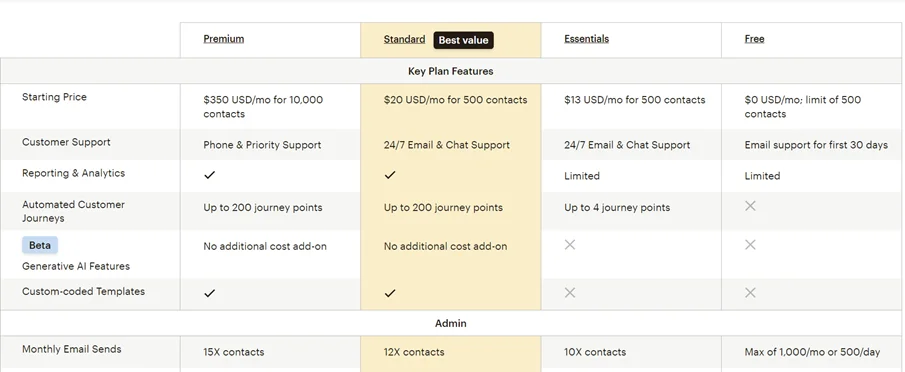
Tool 3: Sender
Sender is a versatile email marketing platform designed to empower businesses of all sizes with intuitive tools and robust features. Known for its user-friendly interface and comprehensive capabilities, Sender facilitates effective email campaign management, automation, and analytics.
This in-depth review explores how Sender enhances email marketing strategies and supports businesses in achieving their marketing objectives.
Key Features:
- Automation Tools:
Automate email workflows and nurture customer relationships with Sender’s automation features. Create personalized customer journeys based on subscriber behavior, such as welcome sequences, birthday greetings, and abandoned cart reminders. Automation saves time and ensures timely communication with subscribers, enhancing engagement and conversion rates.
- Advanced Segmentation:
Segment subscribers dynamically based on demographics, purchase history, engagement levels, and more. Sender’s advanced segmentation capabilities enable marketers to deliver targeted content that resonates with specific audience segments, improving campaign relevance and response rates.
- Personalization:
Tailor email content with dynamic tags and personalized fields to create individualized experiences for subscribers. Personalization enhances customer relationships by delivering relevant content and promotions based on subscriber preferences and behavior.
- A/B Testing:
Optimize email campaign performance with A/B testing functionality. Test different subject lines, content variations, send times, and calls-to-action to identify the most effective strategies for maximizing open rates and click-through rates. Data-driven insights from A/B tests inform decision-making and refine email marketing strategies for better results.
- Analytics and Reporting:
Gain actionable insights into campaign performance with Sender’s comprehensive analytics and reporting tools. Track key metrics such as open rates, click-through rates, conversion rates, and subscriber growth in real-time. Detailed reports provide visibility into campaign effectiveness, allowing marketers to measure ROI, identify trends, and make informed optimizations.
- Integration Capabilities:
Sender integrates seamlessly with popular platforms and services, including eCommerce platforms like Shopify and Magento, CRM systems, and third-party applications through APIs and Zapier. Integration enhances workflow efficiency by syncing customer data, automating tasks, and leveraging additional functionalities across multiple tools.
Pros and Cons
Pros
- Super generous subscriber and send limits
- Full access to automation and segmentation
- Reasonable upgrade costs
Cons
- Clunky drag-and-drop editor
Pricing
The free-forever plan offers up to 2500 subscribers and 15,000 emails monthly. Following are the paid plans:
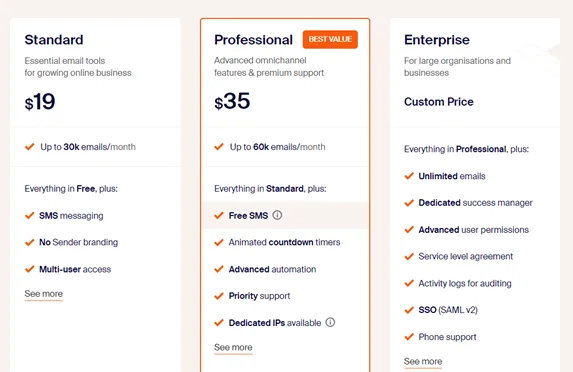
How to Implement AI Tools in Your Email Strategy
Artificial intelligence (AI) solutions have transformed email marketing by allowing marketers to improve personalization, automate tasks, and derive actionable insights from data. Using AI techniques in your email plan can help significantly increase marketing performance and involvement rates.
This detailed book offers a whole framework for combining and applying AI tools to maximize their effects on your email marketing campaigns. Let’s dive:
Step 1: Define Your Objectives
Clearly state your marketing objectives before including artificial intelligence techniques into your email plan. Choose among the particular objectives you wish to reach with artificial intelligence, those related to personalization, automation, segmentation, or campaign performance optimization.
Matching artificial intelligence projects with corporate goals guarantees deliberate application and quantifiable results.
Step 2: Assess Your Current Data Infrastructure
Review your current data architecture to make sure it can efficiently serve efforts motivated by artificial intelligence. Clean, orderly data sets are absolutely vital since artificial intelligence systems depend on them to produce insights and create forecasts.
Review your data’s accessibility, completeness, and quality to find any holes or areas needing work. Think about applying data management best practices to improve the dependability and quality of data.
Step 3: Research and Select AI Tools
Look at research on artificial intelligence products that fit your goals and your email marketing system without trouble. Think about elements including functionality, scalability, simplicity of integration, customer service, and price policies.
Popular artificial intelligence technologies for email marketing include those with advanced personalizing, automaton, predictive analytics, and segmentation capability. Examine choices and select a tool that most fits your particular requirements and financial situation.
Step 4: Integrate AI Tools with Your Email Marketing Platform
Start the integration procedure with your email marketing tool or CRM system once you have chosen an artificial intelligence product. Use pre-built connectors or APIs in conformity with the provider’s integration policies to create data synchronizing between platforms.
Guarantee flawless data flow will help artificial intelligence systems to access consumer profiles, behavior data, and campaign metrics for study and optimization.
Step 5: Implement Personalization Strategies
Leverage AI-powered personalizing tools to provide pertinent material catered to particular subscriber tastes and behavior. Use predictive recommendations, dynamic content insertion, and customized subject lines grounded on AI-driven insights.
Using AI algorithms, segment your audience so that focused campaigns appeal to particular client groups. Try several personalising techniques to find the best one for raising conversion rates and involvement.
Step 6: Automate Email Workflows
AI tools can be used to apply automation processes that simplify repetitive chores and maximize campaign effectiveness. Create automated welcome emails, abandoned cart reminders, re-engagement campaigns, and personalized follow-up based on subscriber engagements.
Send timely, relevant communications that support leads and keep regular contact with your audience using AI-driven triggers and rules. Frequent monitoring of automated processes helps guarantee they produce expected results and complement advertising objectives.
Step 7: Leverage Predictive Analytics
Harness AI-powered predictive analytics to forecast customer behaviors, identify trends, and optimize campaign strategies proactively. Analyze historical data to predict future outcomes such as email open rates, click-through rates, and conversion rates.
Use predictive insights to adjust content, timing, and targeting strategies for better campaign performance and ROI. Continuously refine predictive models based on real-time data to stay responsive to changing market dynamics and consumer preferences.
Step 8: Monitor Performance and Optimize Campaigns
Monitor key performance indicators (KPIs) using AI-driven analytics tools to measure the effectiveness of your email campaigns. Track metrics such as open rates, click-through rates, conversion rates, and ROI to evaluate campaign success and identify areas for improvement. Use A/B testing with AI tools to experiment with different variables and optimize campaign elements like subject lines, CTAs, and content variations. Implement data-driven optimizations based on insights derived from AI analysis to continuously improve campaign performance and achieve your marketing objectives.
Step 9: Ensure Compliance and Data Security
Maintain compliance with data protection regulations such as GDPR, CCPA, and CAN-SPAM Act when implementing AI tools in your email strategy. Ensure that AI tools adhere to data security best practices and encryption standards to protect customer information. Implement transparent privacy policies and provide opt-out options to respect subscriber preferences and maintain trust.
Step 10: Measure ROI and Iterate
Evaluate the return on investment (ROI) of AI tools by analyzing the impact on key business metrics and campaign performance. Calculate the cost savings from automation, improvements in engagement rates, and revenue generated from optimized campaigns.
Iterate on your AI strategy based on performance insights and evolving market trends to adapt to changing consumer behaviors and competitive landscapes.
Conclusion
In conclusion, it is no wrong to say that AI tools for email marketing have changed the entire landscape of email marketing campaigns. You just need to make a few clicks and your perfectly customized emails will start shining in the inbox of your valuable clients and audience!
